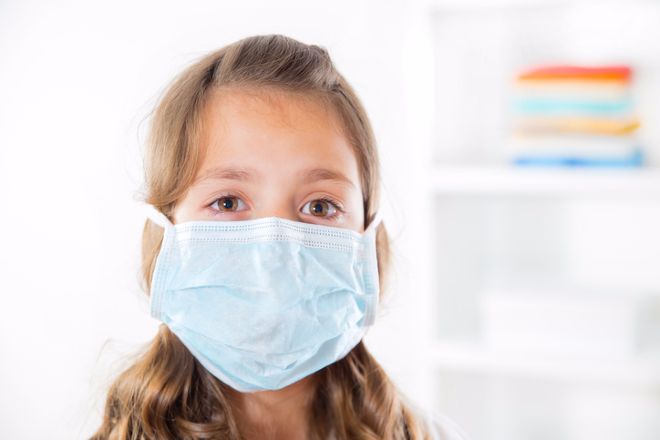Interview by Leah Thayer


Net Assets: What kinds of hidden toxins and pollutants commonly lurk on school campuses?
Brian King: The most debated concern is artificial turf, and a rising concern is “Wi-Fi poisoning,” both of which I’ll address in a bit. Here are some others, with the caveat that the risks facing any one school depend on its age, construction type and the use of its buildings.
- Common indoor air quality pollutants include mold (fungi), Legionnaires’ (bacteria), fumes from boilers or diesel generators (carbon monoxide) and poorly ventilated painting jobs, as well as everyday cleaning products. Students at boarding schools are at greater risk due to habitational exposure.
- Lead in drinking water largely occurs in buildings with older piping systems, but lead from municipal piping systems has been shown to come into school drinking water supplies. Schools should conduct periodic testing and ensure that adequate filtration systems are in place.
- PCBs can become issues during renovation, when disturbing HVAC systems or other sealants.
- Asbestos, sometimes found in older buildings, usually is not harmful unless disturbed and made friable (i.e., made airborne by construction or maintenance).
- Underground tanks, such as oil or diesel tanks, can leak or become corroded over time.
Net Assets: Let’s talk about artificial turf. What do we know about the risks?
The debate about crumb rubber reflects conflicting and often factually inadequate reports issued by various federal and state government agencies and independent organizations. Thankfully, we may have a more conclusive answer by the end of 2017.
Brian King
AHT Insurance
King: By far the most stir has involved the crumb rubber found in many artificial turf fields. This debate reflects conflicting and often factually inadequate reports issued by various federal and state government agencies and independent organizations. Thankfully, we may have a more conclusive answer by the end of 2017, based on a joint investigation by the EPA, the Consumer Product Safety Commission and the CDC.
Why the concern? This issue became widely publicized in October of 2014. NBC News reported on a soccer coach at the University of Washington who was concerned about patterns among soccer players (specifically goalies) developing cancer after playing on artificial turf fields. These fields often contain lead and other heavy metals and chemicals that are believed to contribute to cancer as well as brain, kidney, liver, skin and bladder issues, either through inhaling the crumb rubber or exposure to the fumes released during hot temperatures. However, the materials in artificial turf are never the same from field to field, so blanket assumptions can be misleading.
Net Assets: What best practices are you seeing independent schools implement in response?
King: In the absence of conclusive evidence one way or the other regarding artificial turf, we’ve seen some schools replace the infill with Geofill. These alternative materials are made from coconut husks and fibers and are believed to be safer, but are also slightly more expensive.
Net Assets: What about “Wi-Fi poisoning”?
Electromagnetic radiation is already excluded under most schools’ general liability policies. Even if a claim arose alleging Wi-Fi poisoning, it is likely the school policy would not respond even for defense costs.
Brian King
AHT Insurance
King: Wi-Fi is a form of electromagnetic radiation that also creates electromagnetic fields. EMR and EMF are not new concerns; in 2005, the World Health Organization classified them as potentially carcinogenic to humans, noting that they can interfere with cell functioning, break DNA strands and damage the immune system. They are why pregnant women are advised not to live under large powerlines or stand too close to microwaves during use.
One item most business officers should note is that this kind of radiation is already excluded under most schools’ general liability policies. In other words, even if a claim arose alleging Wi-Fi poisoning, it is likely the school policy would not respond even for defense costs.
The unknowns regarding Wi-Fi lie in our 24/7 exposure to it. We still don’t know the long-term effects from EMRs/EMFs, but court cases have documented alleged Wi-Fi poisoning in schoolchildren with “electromagnetic hypersensitivity syndrome.” And reinsurance carriers have expressed concerns around whether EMFs are related to the rise in ADHD among children. In fact, Swiss Re (the largest reinsurance carrier) listed EMFs as a top 10 emerging risk concern in 2013.
Net Assets: What kinds of threats can toxins and pollutants pose to the health of students, school employees and visitors?
King: The answer varies widely based on an individual’s susceptibility. In 2004, the Institute of Medicine suggested a link between indoor mold and upper respiratory tract illness in healthy children, potentially including asthma. Legionnaires’ disease, caused by Legionella bacteria that spreads through mist in air conditioning units, is most risky to people who are over 50 years old, have weak immune systems (i.e., pregnant women), suffer from chronic lung disease or are heavy tobacco users. Individuals with rare sensitivities may also have unique exposures, as shown with Wi-Fi and electromagnetic hypersensitivity syndrome.
Net Assets: What factors can increase the likelihood that a school’s facilities will harbor hidden toxins and pollutants?
Derek Symer: A building’s age and site are certainly factors due to asbestos and lead concerns. Proximity to an industrial area can be of concern due to chemical emissions, and being near water can be of concern if pollutants escape from your school — say, after use in a science lab — and thus require a cleanup effort. Be mindful when buying or expanding a property, as a site’s history can increase exposures if, for instance, a dry cleaner or gas station had been there. Otherwise, schools can mitigate these risks through strong internal maintenance procedures including water intrusion and asbestos abatement plans.
Net Assets: Should schools take additional precautions when undergoing construction?
Symer: Absolutely, construction can dramatically increase pollution exposure. Excavating, for instance, can dig up an unknown underground storage tank, pierce an outflow pipe, or reveal issues with contaminated soil, discarded lead paint or asbestos. Alternatively, repairing or replacing your HVAC system or a roof can reveal exposure to mold and Legionella concerns because of faulty caulking, installation and so on.
The key here is to pick reputable construction partners and have a strong contract in place before work begins — including requiring contractors to carry pollution liability.
Net Assets: Are newer facilities in general more “safe” with regard to hidden toxins?
Symer: New doesn’t always equal safe, though it can mitigate a lot of concerns around indoor air quality, asbestos and lead exposures. And there are some cases where new may not be better. For instance, is artificial turf better than a grass field? Is a new school with powerful Wi-Fi routers and lightning-fast internet speeds safer than blackboards? Only time will tell.
Net Assets: What kinds of liability exposures can hidden toxins and pollutants present for schools?
King: These issues fall into two main buckets of loss: first-party losses (i.e., cleanup, disinfection, mitigation and other items affecting your balance sheet) and third-party injury losses (human health issues and property damage to others from escaped pollutants resulting in lawsuits and fines).
Financially speaking, standard school insurance policy programs rarely cover claims that arise from pollution exposures — not even for defense (though some have buybacks for injury from science labs). This means that your insurance carrier is not likely to defend even allegations of injury in most cases, let alone agree to a settlement. So far, a Massachusetts Wi-Fi signal injury case has claimed $250,000 in alleged damages that school policies do not normally cover, and it involves only one child. Even a cleanup effort due to dirty soil can easily cost in the hundreds of thousands of dollars.
Net Assets: How much understanding of these risks do most schools have, in your estimation?
I think many schools underestimate the [risk of pollution] exposure to their balance sheet. They largely think about toxins and pollutants only in the event of purchasing new property and doing phase 1 studies or renovation projects.
Derek Symer
AHT Insurance
Symer: I think many schools underestimate the exposure to their balance sheet. They largely think about toxins and pollutants only in the event of purchasing new property and doing phase 1 studies or renovation projects. This exposure is not one of frequency, like slips and falls or property-related claims, but of severity, more like sexual abuse and molestation, and it often takes time to cultivate an air pollution hazard. Therefore, many boards do not make it a forefront concern until after the fact.
Net Assets: What are schools’ obligations for identifying and remediating these risks?
Symer: Schools are legally required to have lead and asbestos abatement plans. But I believe the obligation goes further and is more of a duty of care requirement for staff and students. Parents trust that a school maintains its facilities and does not inadvertently expose children to harm. And employees expect a safe place to work.
Net Assets: Are schools also obligated to report these risks — to local, state or federal authorities, for instance, or to their broader school communities?
Symer: Yes, though requirements vary by state and type of pollution. Schools in the state of Washington, for example, are required to report any spills (such as gas or oil) over a certain quantity to the state department of ecology.
In general, it’s not a good idea to keep hazardous conditions a secret from the school community. From a basic PR perspective, it’s better to note that you’re aware of the problem and taking steps to remediate it than to have a parent break the news about a child’s illness.
Net Assets: Besides taking action to prevent and/or mitigate these risks, are there insurance policies that can help protect schools?
Symer: Schools can obtain specific site pollution policies, though coverage differs widely by carrier. Because there are few standards in the forms used for traditional policies, I would advise any client to procure policies from a broker with expertise in the field, as many endorsements are needed to make a policy respond to the school’s exposures and not just traditional clean-up requirements. Multiyear term policies can also help lower annual costs. Depending on their unique exposures, we are starting to see schools evaluate this type of policy as their boards begin to develop a greater understanding of the potential financial risk.
Brian King and Derek Symer are executives at AHT Insurance. AHT focuses on customized insurance and risk management solutions for independent schools across the United States. Leah Thayer is the editor of Net Assets and NBOA's vice president of communications.
Download a PDF of this article.



